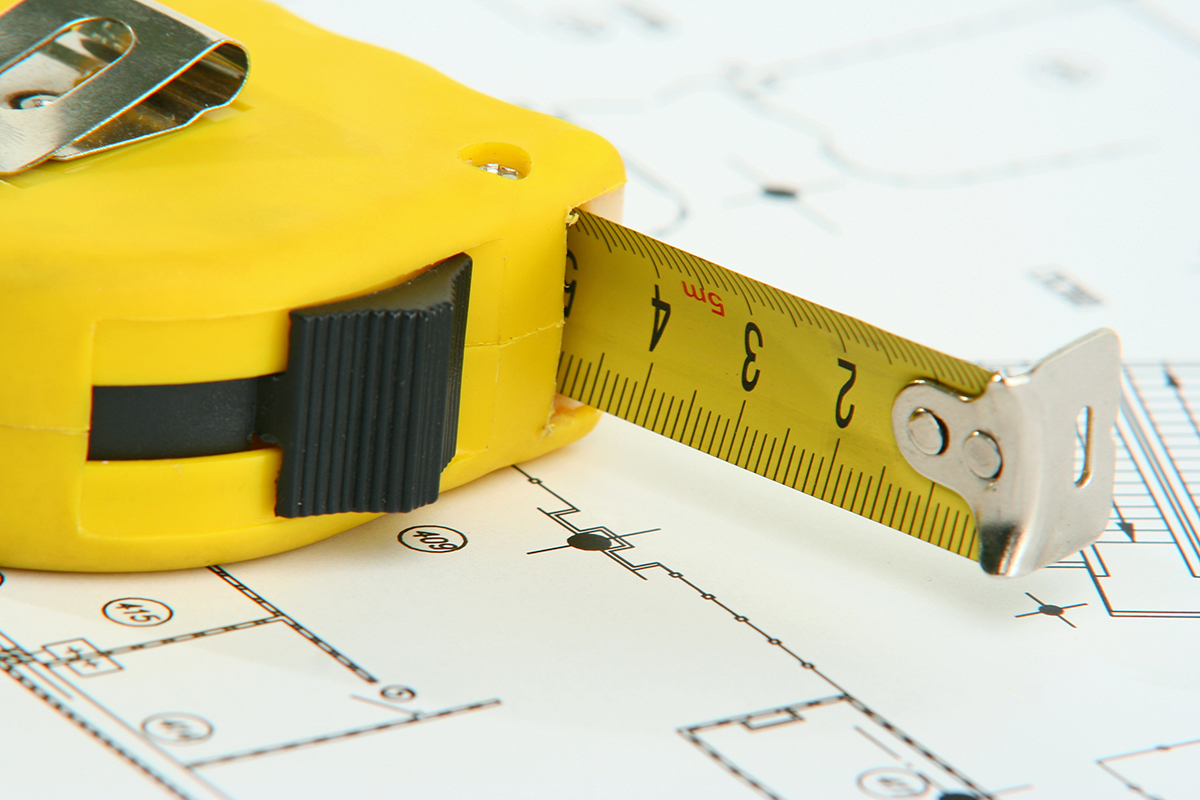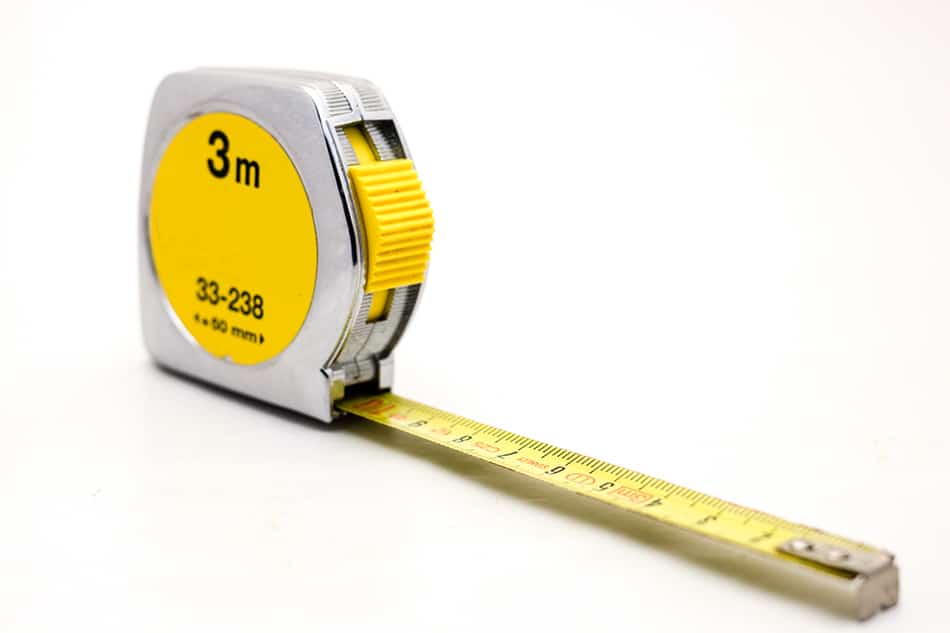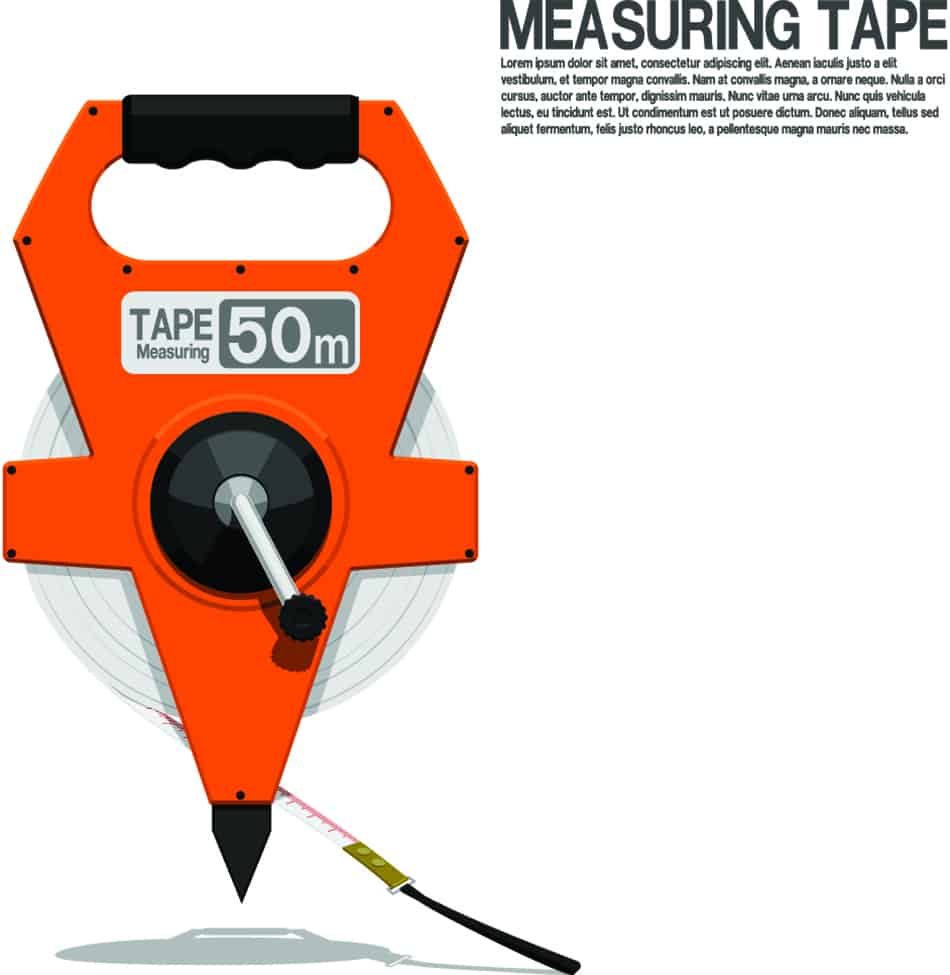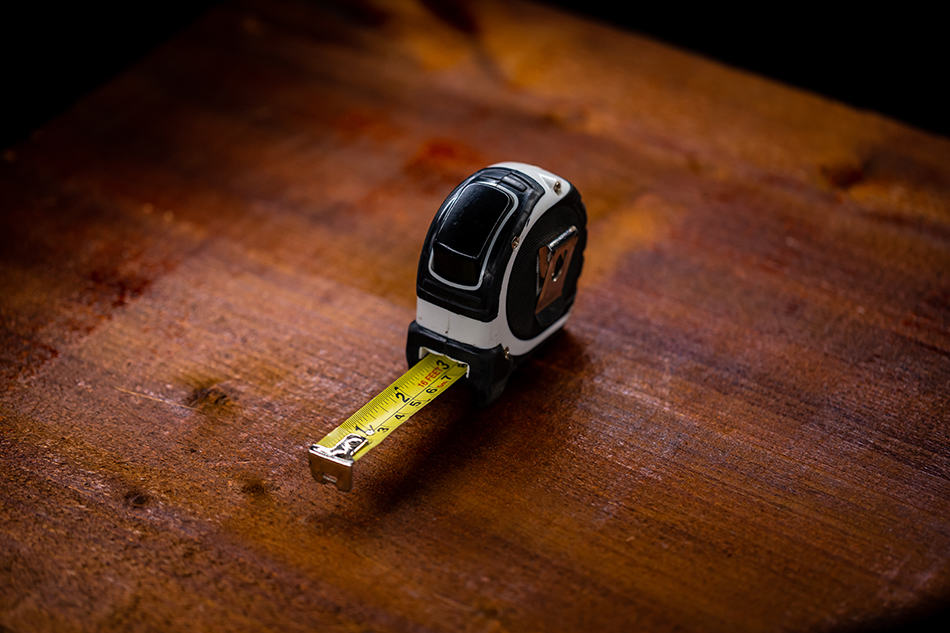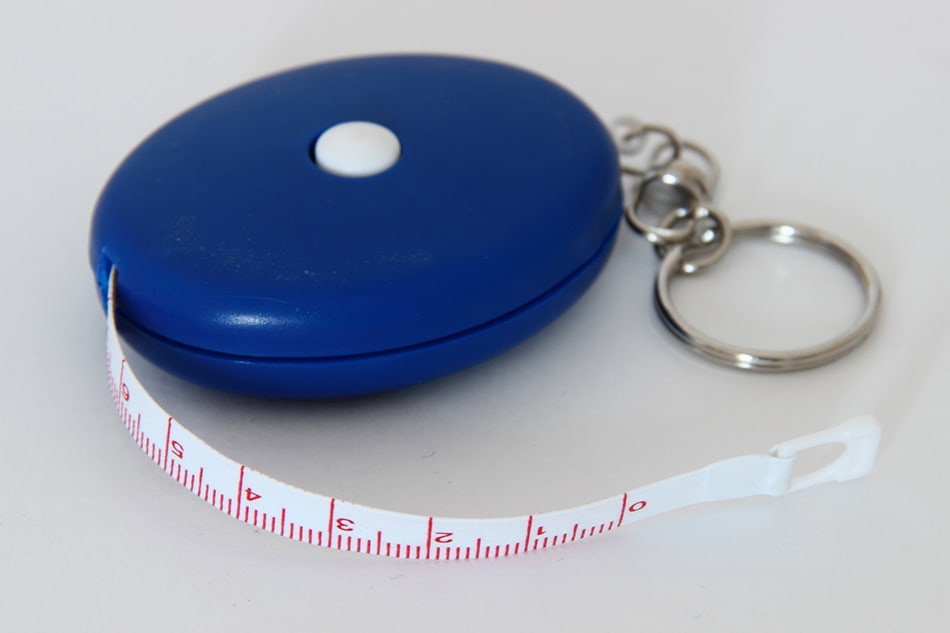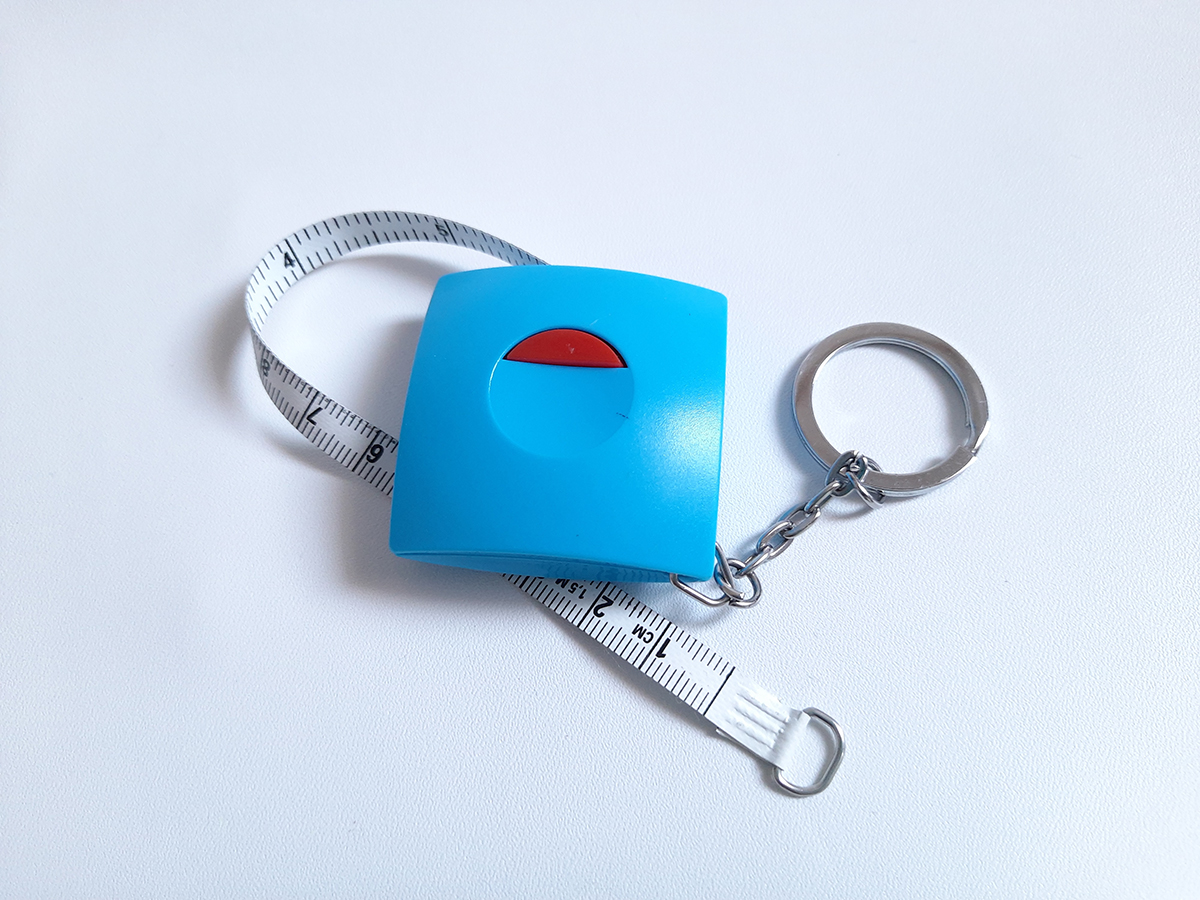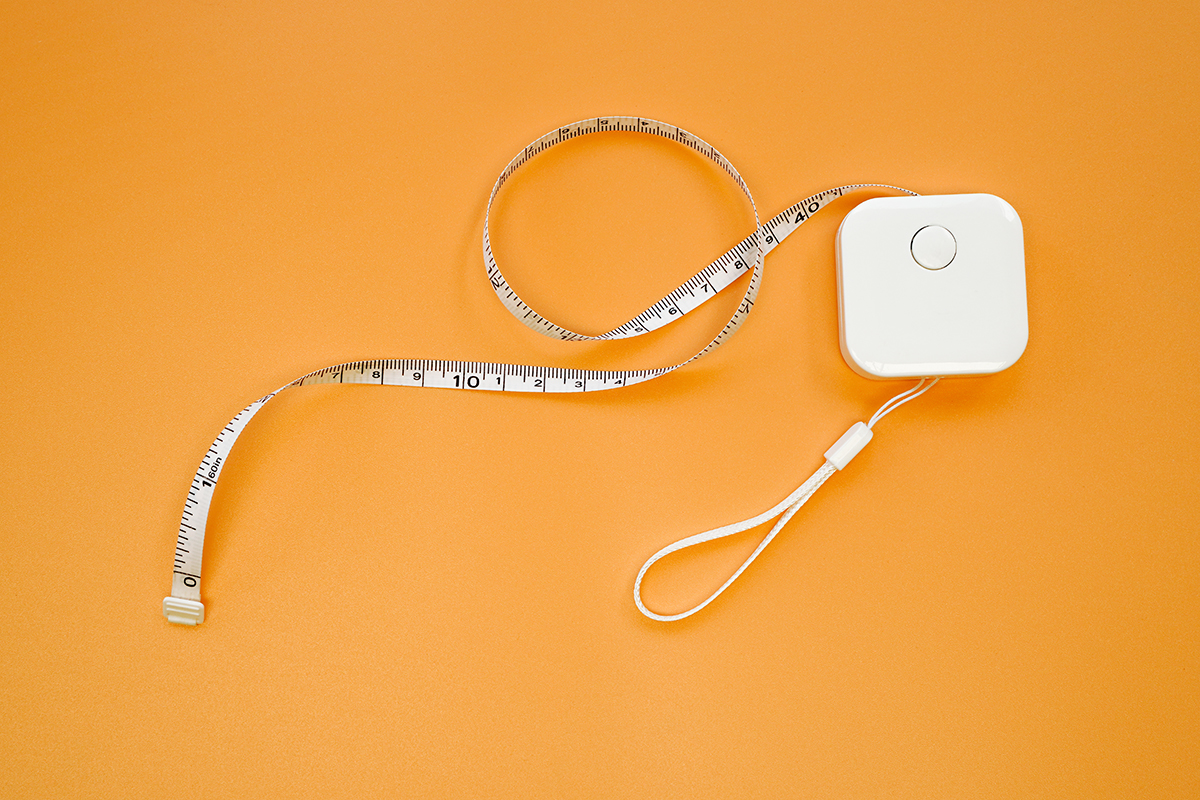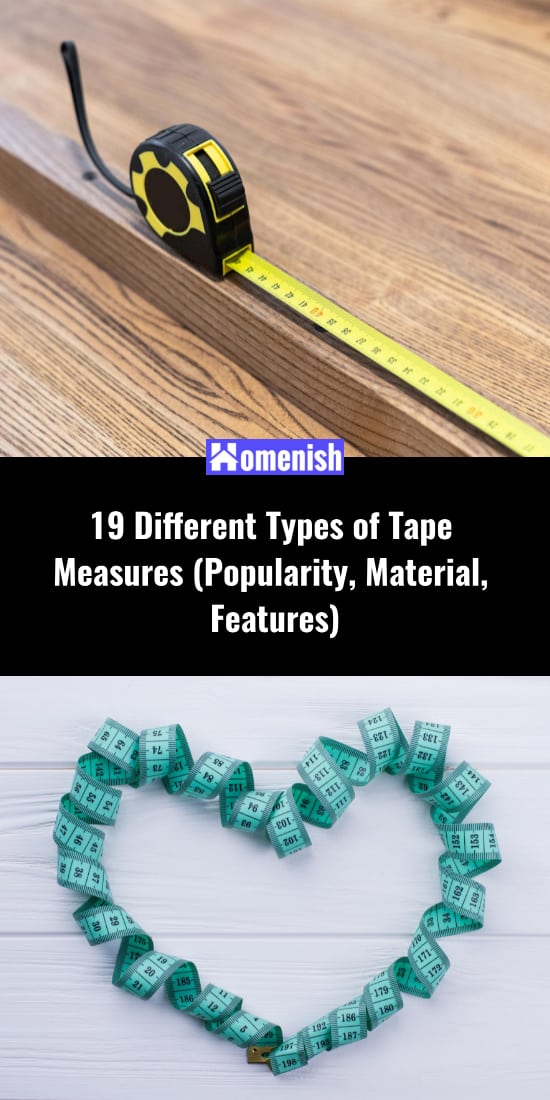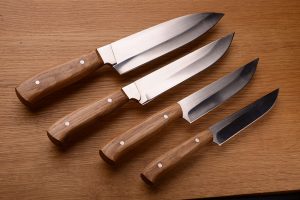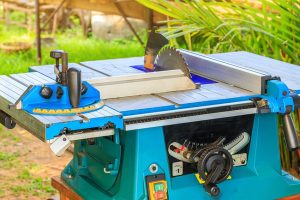Whether you are carrying out home improvements, sewing clothes, constructing a building, or hanging a photo frame, you are sure to need a tape measure to complete your job properly.
Tape measures are simple but essential tools that are used in a wide variety of situations, and the type you will need will depend on what you intend to use them for.
Types of Tape Measures
A tape measure is a flexible ruler that gives a precise measurement of an object’s size and dimension in inches, centimeters, and so on. There are several different types of tape measures available.
And further to this, you can find tape measures with additional features to make your job easier or more efficient. This list covers all of the types of tape measures available and what they are best used for.
Pocket Tape Measure
This is the most common type of tape measure that will come to mind when most people imagine a tape measure. It is a small, handheld tool that features a long blade – a steel or fiberglass measuring strip – that coils around itself inside the casing.
This can be pulled out long for measuring large objects or distances and then retracted back into the case for easy storage and portability. It is known as a pocket tape measure because of the size, which will fit snugly inside most adult-sized clothing pockets.
Typically, these types of tape measures have a plastic casing and a metal ribbon on which the measurements are marked. The metal ribbon is thin enough to make it flexible and therefore able to easily coil around itself or measure around corners while also being sturdy enough to withstand use on construction sites.
Pocket tape measures are usually spring-loaded and have a convenient lock button that can be operated with a thumb, thereby allowing the user to lock the tape at a specific measurement. A single button also operates the retraction function, causing the entire length of the measuring tape to wrap around itself into a coil within the case.
These types of measuring tapes also usually have a hooked corner at the tip of the tape, which can be used to grip onto the end of a wall or object you are measuring. This small feature makes a big difference to the tape because it means the user will be able to use it to make measurements by themselves instead of requiring an additional person to hold the end of the tape.
This part of the tape often also has a small hole in it, through which the user could insert a nail to be lightly tacked onto a wall for extra stability when measuring by themselves.
Pocket tape measures are very easy to use and are an essential piece of kit in any toolbox. They are used in a wide range of industries, as well as around the home and garden. Pocket tape measures come in various sizes, though they generally range between a total length of 15 feet and 35 feet.
They can also come in different units of measurement. Some will have either imperial or metric units marked on them, while some pocket tape measures can have both imperial and metric.
Surveyor Tape Measure
These are extremely long tape measures that are typically used by surveyors to measure land, hence the name. They tend to be made of a flexible fabric so that the tape can accurately reflect the curves or corners in the shape of the land being measured.
This type of tape comes in very long lengths that make it suitable for measuring distances. Surveyors might use this tape to measure out boundary lines for marking out when selling a property, for creating maps, or for settling neighbor disputes. You can find surveyor tape measures in various lengths, such as 100 feet or 500 feet long.
Unlike pocket tape measures, these tape measures do not self-retract. Instead, they have a crank handle that needs to be wound backward for the tape to coil around itself and return to its starting position.
Sewing Tape Measure
These tape measures are also known as tailor’s tape measures because they are an essential tool in a tailor’s sewing kit. They do not usually come in a portable case like a pocket tape measure or surveyor tape measure, but instead are a long fabric piece of ribbon with measurement markings all along it. They can be folded over on themselves and secured using an elastic band for storage, or they might be kept in a special case.
These tape measures will come in very handy for many types of sewing, for example, making clothing, making textile homewares, or upholstering furniture. Unlike other types of tape measures, which can be made of metal or stainless steel, a sewing tape measure will always be made of a soft textile such as cotton, or they might be made of flexible plastic.
They need to be very pliable in order to accurately measure body parts so that clothes fit perfectly, for example, around a person’s waist or hips.
Sewing tape measures usually have imperial measurements on one side and metric measurements on the other side, making it easy to see what a measurement is in the alternative units, as you can quickly flip the tape over. These types of tape measures generally aren’t very long because they aren’t used for measuring long distances, and as standard, are usually no longer than 60 inches.
If you need a longer sewing tape measure, for example, if you are making a larger item such as window drapes, then you can buy extra long sewing tape measures with a maximum measurement of 120 inches.
One important thing you need to consider with sewing tape measures is that they can become stretched over time with a lot of use. This will be a problem because it means your measurements will no longer be accurate. If your sewing tape measure is getting old or starts to look stretched out, then you need to buy a new one.
These are not expensive items, so replacing a sewing tape measure every few years is worth the cost to ensure your measurements are correct and precise.
Laser Tape Measure
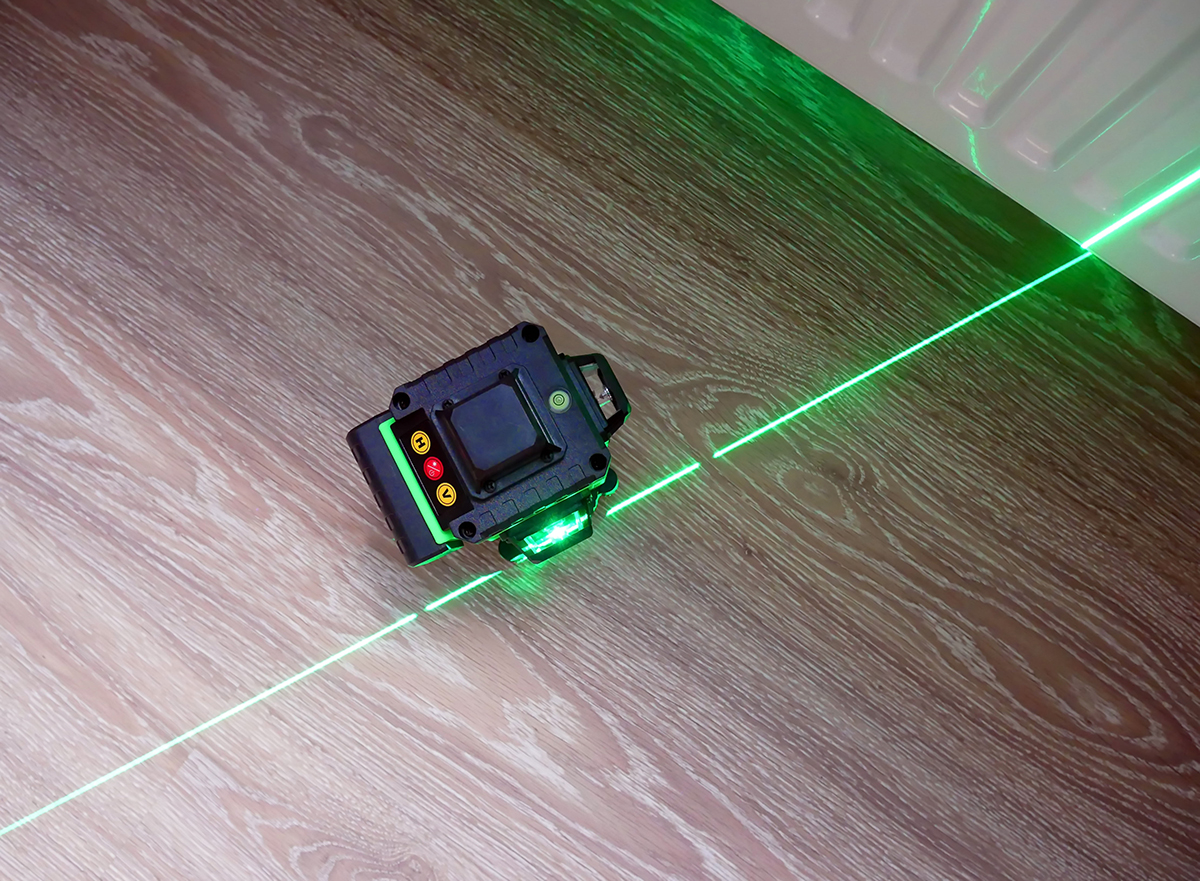
To do this, the user points the tool at the space they want to measure, for example, up to the ceiling, and the tool will calculate the time it takes for the light beam to hit the ceiling and bounce back. This calculation will be converted into a measurement and digitally displayed on the tape measure.
This is an especially useful tool for realtors, as it lets them quickly find out the dimensions of a room for their property listings. As well as being efficient, they also make the job easier because they can be easily operated by one person rather than two.
The limitation of this device is that it needs a surface to bounce the light on to calculate measurements and, therefore, cannot measure wide open spaces or objects without protruding ends.
Tape Measure Features
Retractable
Most pocket tape measures are retractable, meaning the tape is able to be withdrawn back into its case by itself, usually at the push or release of a button. This is a very useful feature as it saves the time and frustration of having to manually wind the tape measure back up.
A retractable tape measure should be used with caution, as it can flip up or bend in any direction while retracting, which could cause it to hit someone standing nearby and cause injury.
You should never try to stop the tape from retracting once it has begun its retracting motion. The tape may retract very quickly, and if you try to catch it, you could slice your fingers open on the sharp edges of the tape.
If you suddenly realize you don’t need to retract the tape, it is best to wait until it has fully retracted and then pull it out again to be safe. Alternatively, you could press the lock button, as this should pause the retracting motion.
Locking
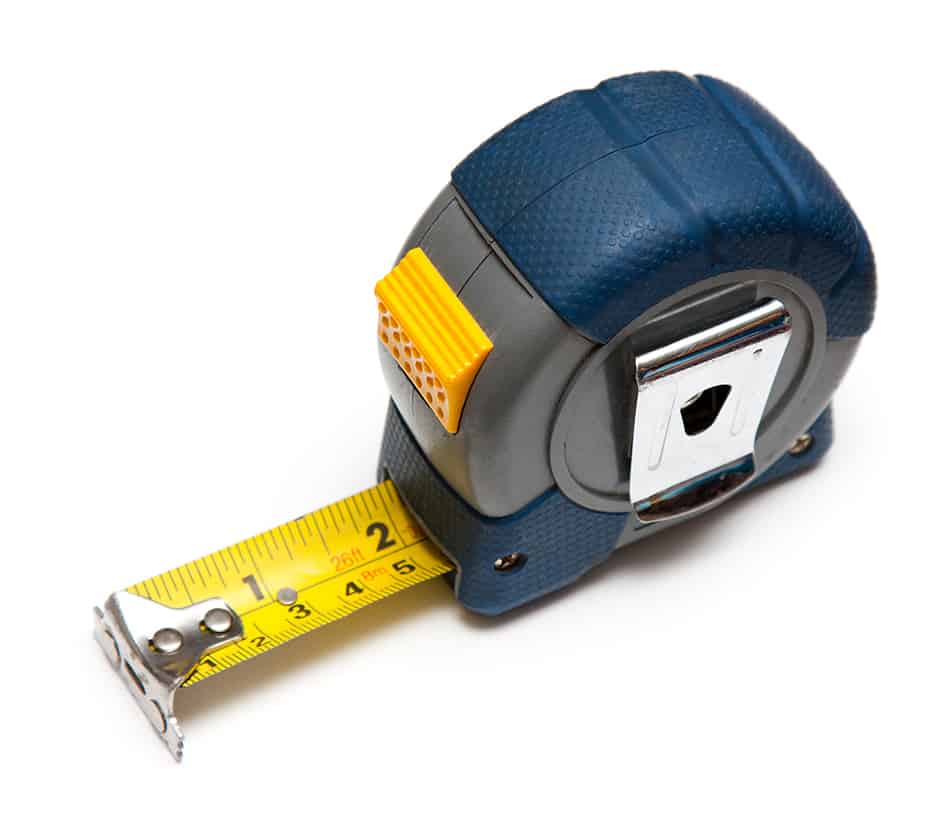
Having a tape measure that can lock will free up the user’s hands to mark up the measurements or take notes instead of having to use their hands to hold the tape in place. The lock also works as a good safety function to prevent the tape from unexpectedly retracting and flipping up to hit you in the face.
Keyring
Keyring tape measures are small pocket tape measures that have a keyring attachment, allowing them to be hooked onto a belt loop or a tool belt.
This is especially useful if you are working on a job in which you will need to take frequent measurements but don’t want the inconvenience of carrying around a larger tape measure with you. Keyring tape measures are lighter than pocket tape measures, so you can attach them to your belt or keys without really noticing that they are there.
The smaller size of these tape measures does mean that they are only useful for measuring smaller items. They might be useful, for example, if you are a carpenter and you regularly need to measure cabinets or an interior designer needing to measure sofas or other items of furniture for a space.
They will be less useful for realtors or anyone who needs to measure entire room spans, as they won’t be long enough to spread the tape across the whole length of some rooms.
Double Hook
Some tape measures will have an additional design feature called a double hook. This is where the hooked piece of metal at the tip of the tape measure blade sticks out in both directions, allowing you to measure at any angle.
This is especially useful when you need to measure underneath something, for example, under a countertop or when working in tight spaces. The ability to hook the tape measure from either side will prevent you from having to contort yourself around to view the measurements.
Rust Resistant
Rust-resistant tape measures are made from materials that are less likely to rust when used in wet conditions or stored in damp basements or sheds. This type of tape measure will not be completely protected from rust damage, but it will be much less likely to succumb to rust as quickly as other standard metal tape measures and will be more long-lasting.
If you frequently work outside in all weather, then a rust-resistant tape measure will be a good investment. Otherwise, you might find yourself having to replace rusted tape measures repeatedly.
Even if you do have a rust-resistant tape measure, it’s a good idea to dry it properly after using it in a wet environment and store it in a dry place free from dampness, as these will help to ensure your tape measure has a longer life span.
Digital
A digital tape measure has an electronic screen, generally with an LCD display, which shows the reading of a measurement when the tape is pulled out.
These tape measures are usually run on rechargeable batteries and have long battery lives so that they very rarely have to be replaced or charged. These types of tape measures are useful to get a quick reading and also to ensure an accurate reading if you find the small measurements on the tape hard to read.
Some digital tape measures can save their readings, so you don’t even have to write down your measurements and can instead revert to your last taken measurements. Settings on the tape measure can switch the display readings from imperial to metric measurements or metric to imperial.
Some display screens have backlights, which can be especially useful to ensure you get the correct tape measure reading if you are working in low light and the measurements on the tape itself are not clearly visible.
Kids
For some reason, every time you get a tape measure out, your child will suddenly appear and want to play with it. Unfortunately, these tools are not suitable for children to play with, as they have sharp edges that can cut skin, and the retracting feature can cause the tape to suddenly spring back, which can be dangerous. If your kids want to help you out with measuring tasks, then a kids’ tape measure is a great toy they can play with.
These tape measures work just the same as proper tape measures, so your child can really get involved with measuring, but they incorporate safety features to prevent children from being harmed during use. Kids’ tape measures have lightweight plastic cases, and the measuring tape itself will be fabric or pliable plastic.
They won’t have sharp edges or any parts that a child might hurt themselves on, so you can be sure your child is safe while using the toy. Kids’ tape measures are usually brightly colored and will have larger numbers on the tapes to make them easier for children to read. They may also be slightly larger than pocket tape measures, making them easier to grip on small hands.
Novelty
Novelty tape measures come in almost any shape or color and are often produced as a marketing material to publicize companies. They may be given away as a free promotional item by some companies and have the company’s name, logo, and contact details printed on them.
Though novelty tape measures might be more expensive to make compared to pens or business cards, they are a great investment because most people keep a measuring tape handy in their kitchen drawer and, therefore, would see your company name every time they use it.
Customized
A customized tape measure can be specially personalized for the recipient by having their name, date of birth, or special message engraved on the tool. These make great gifts for anyone who frequently uses tape measures, for example, carpenters, builders, or product designers.
They could be given as a birthday present, an anniversary present, or a unique Mother or Father’s Day present. This type of present is sure to be treasured by the recipient, so be sure you choose a high-quality tape measure for customization so that it will last many years.
Tape Material
Plastic
Tape measures that have tapes made from plastic tend to be the most inexpensive. While the low cost of these tape measures may make them a tempting purchase, they also have the shortest life expectancy and, therefore, can end up costing you more in the long run.
Plastic tape measures have a tendency to stretch, making your measurements inaccurate. These types of tape measures are not durable and will usually have to be replaced periodically.
Metal
Metal tape measures are great for use in many industries because metal is sturdy and durable. The main problem with these tape measures is that they can cause injury when used carelessly, as the edges of the tape are sharp.
They are best for use when measuring straight or flat objects because though the metal is flexible, it will not closely adhere to bends or bumps and can therefore result in inaccurate measurements.
These types of tape measures can last many years and represent good value as they are not expensive to buy. They can rust, so be sure to store them appropriately in dry conditions.
Fiberglass
Fiberglass is a good option for tape measure material if you are looking for a tape measure that is built to last. Fiberglass can withstand sharp scrapes from rocks or other heavy materials when used outside, and it also won’t be affected by adverse weather conditions. This makes it an ideal choice for tape measures that will be used outside in various terrains, such as surveyors’ tape measures.
Fiberglass is not only very durable, but it is also very lightweight, therefore making fiberglass tape measures much easier and lighter to carry around. Fiberglass tape measures may be slightly more expensive compared to other tape materials, but they are a superior material that should last longer and, therefore, might be more cost-effective in the long run.
Handle and Case Material
Plastic
Most small tape measure cases and handles these days are made from plastic. Smaller tape measures, such as keyring tape measures, are typically made from lightweight, thin plastic, meaning that they will crack easily and do not last as long as those made of more hardwearing materials.
Bigger tape measures that are intended for use by professional tradespeople tend to have heavy-duty plastic cases and handles, sometimes with additional rubber grips. These types of plastic cases offer a good balance between being long-lasting while also being made from a material that will not rust.
Metal
Metal cases on tape measures were once standard, but they are now considered to be less popular. Metal cases can rust easily and don’t stand up well to water damage; however, they are very strong and do a great job of protecting the measuring tape inside. Metal tape measures are much more likely to survive drops and heavy-handed treatment and will not crack or break in the same way that plastic cases can. They are built to last but are less ergonomic than cases made from other materials.
Rubber
Tape measure cases and handles that are coated in rubber make them great for gripping onto. If you are working in wet conditions, or maybe if you have oil or plaster on your hands, then a rubber tape measure will still be easy to grip and will help to prevent any droppages. Rubber cases tend to have bumps or ridges that also aid in creating a strong grip.
